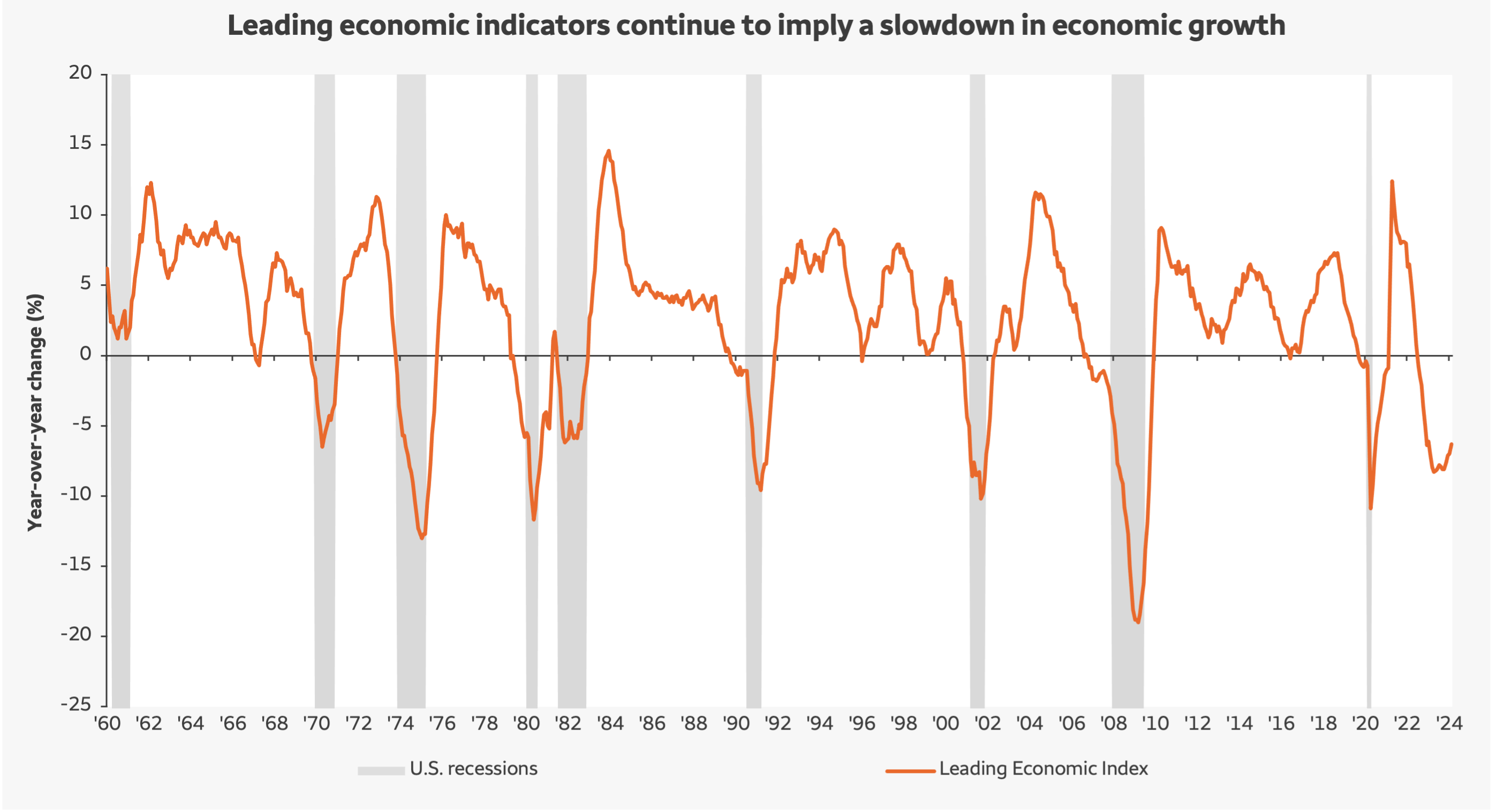
Line chart showing the year-over-year percent change of an index of leading economic indicators from January 1960 to February 2024. The index has been on a downtrend since early 2021, with such downtrends in the past typically being tied to an approaching recession. The index bottomed in late 2023 but remains negative.
Sources: Bloomberg and Wells Fargo Investment Institute. Monthly data from January 1, 1960, to February 29, 2024. The Conference Board Leading Economic Index® (LEI) is a composite average of 10 leading indicators in the U.S. It is one of the key elements in the Conference Board's analytic system, which is designed to signal peaks and troughs in the business cycle. The ten components of The Conference Board Leading Economic Index® for the U.S. include: Average weekly hours in manufacturing; Average weekly initial claims for unemployment insurance; Manufacturers’ new orders for consumer goods and materials; ISM® Index of New Orders; Manufacturers’ new orders for nondefense capital goods excluding aircraft orders; Building permits for new private housing units; S&P 500® Index of Stock Prices; Leading Credit Index™; Interest rate spread (10-year Treasury bonds less federal funds rate); Average consumer expectations for business conditions.
Key Takeaways
- Declines in the Index of Leading Economic Indicators (LEI) have historically preceded recessions.
- Recession warnings are flashing nearly two years of monthly declines in the LEI. Increases in the ratio of coincident to lagging indicators, often foreshadowing changes in the LEI, point toward improvement ahead but likely not soon enough, we believe, to prevent an economic slowdown.